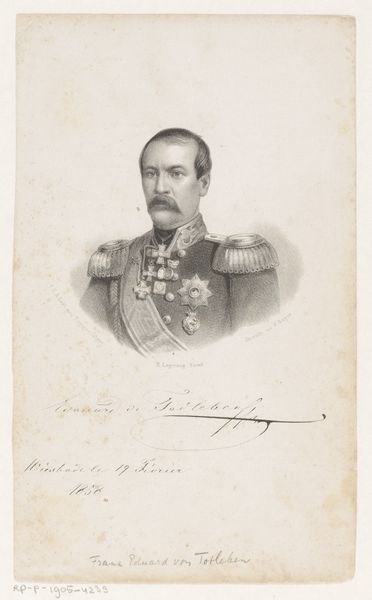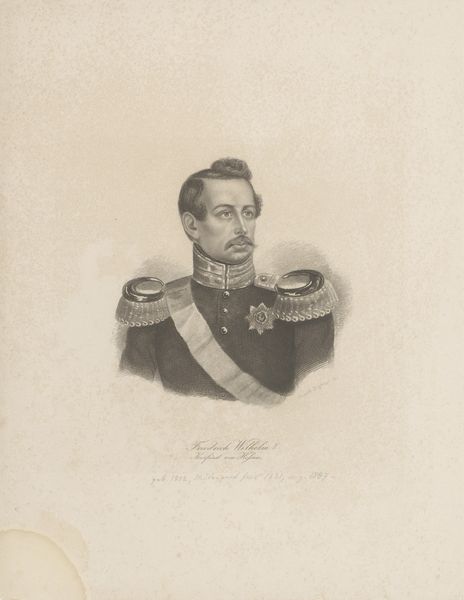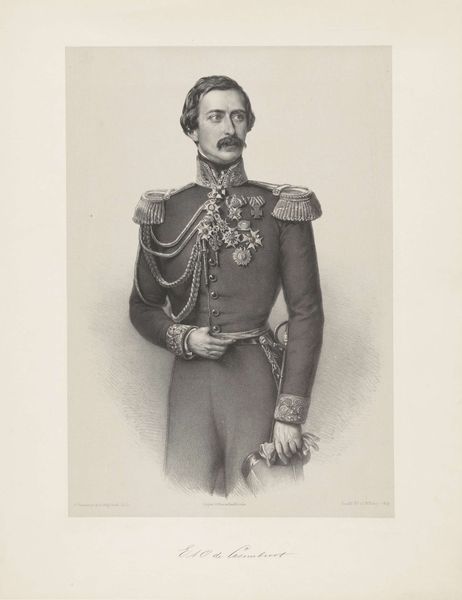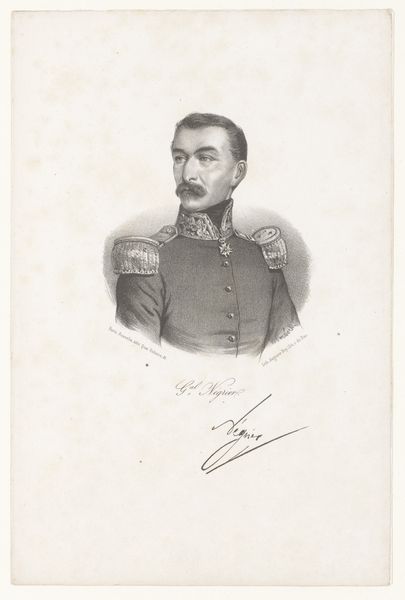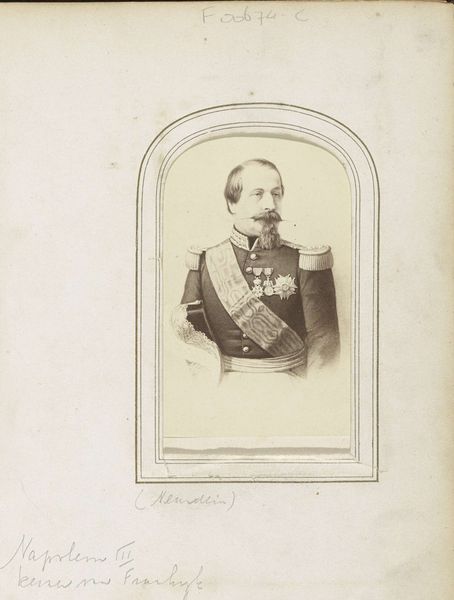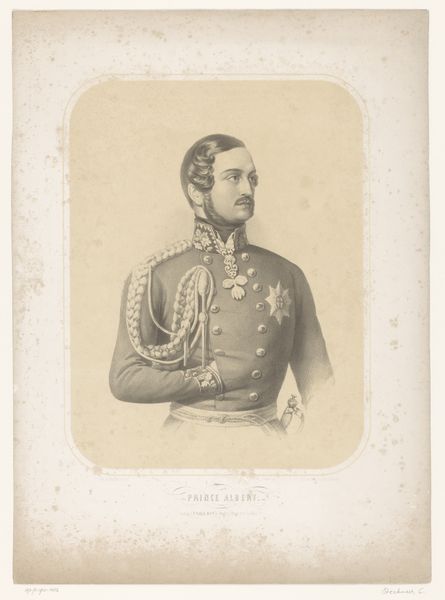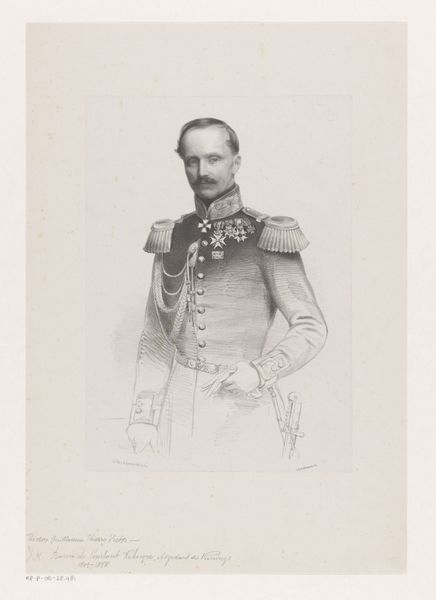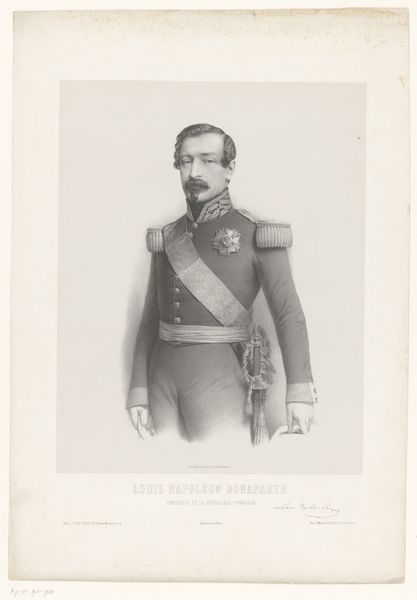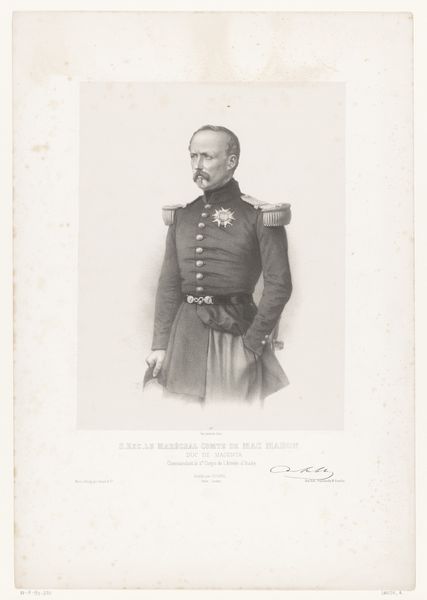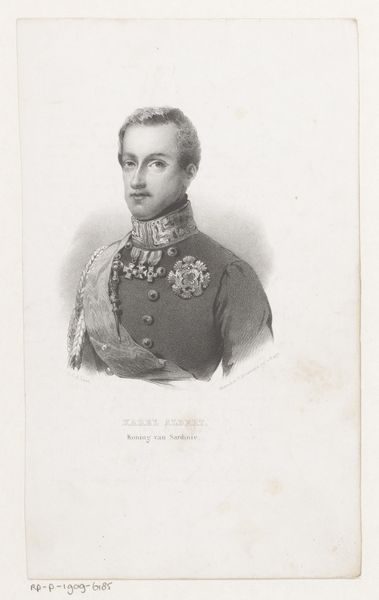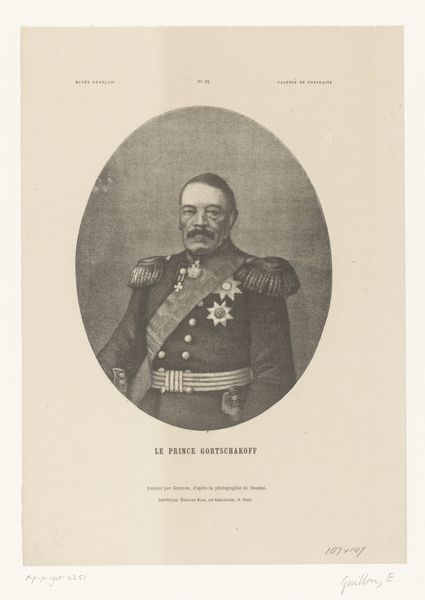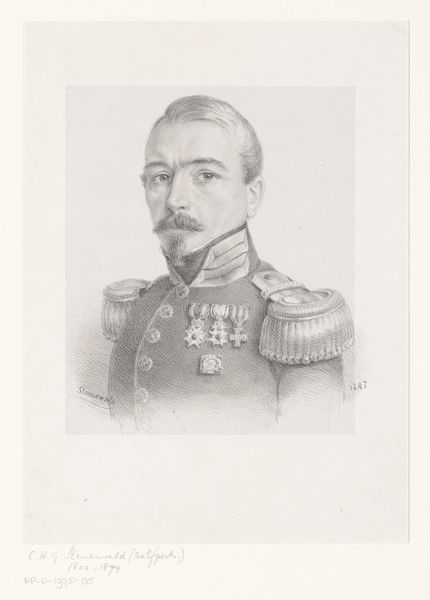
Dimensions: height 262 mm, width 182 mm
Copyright: Rijks Museum: Open Domain
Alphonse Farcy produced this portrait of Marshal Armand Jacques Leroy de Saint-Arnaud in the 19th century. But what does this image tell us about the social and political context of France at that time? Looking at the visual codes, we see Saint-Arnaud adorned with the symbols of military power: epaulettes, sash, and medals. These would have been instantly recognizable to the French public. This portrait was created during a period of significant social upheaval and military expansion in France. Saint-Arnaud was a key figure in the French army, which was used both to suppress domestic dissent and to pursue imperial ambitions abroad. Saint-Arnaud was a supporter of Louis-Napoléon Bonaparte, and played a significant role in the coup d'état of 1851, after which Louis-Napoléon became Emperor Napoleon III. Understanding the social and institutional context of this portrait requires us to research not only French history, but also the history of military institutions and the role of visual propaganda in shaping public opinion.
Comments
No comments
Be the first to comment and join the conversation on the ultimate creative platform.
